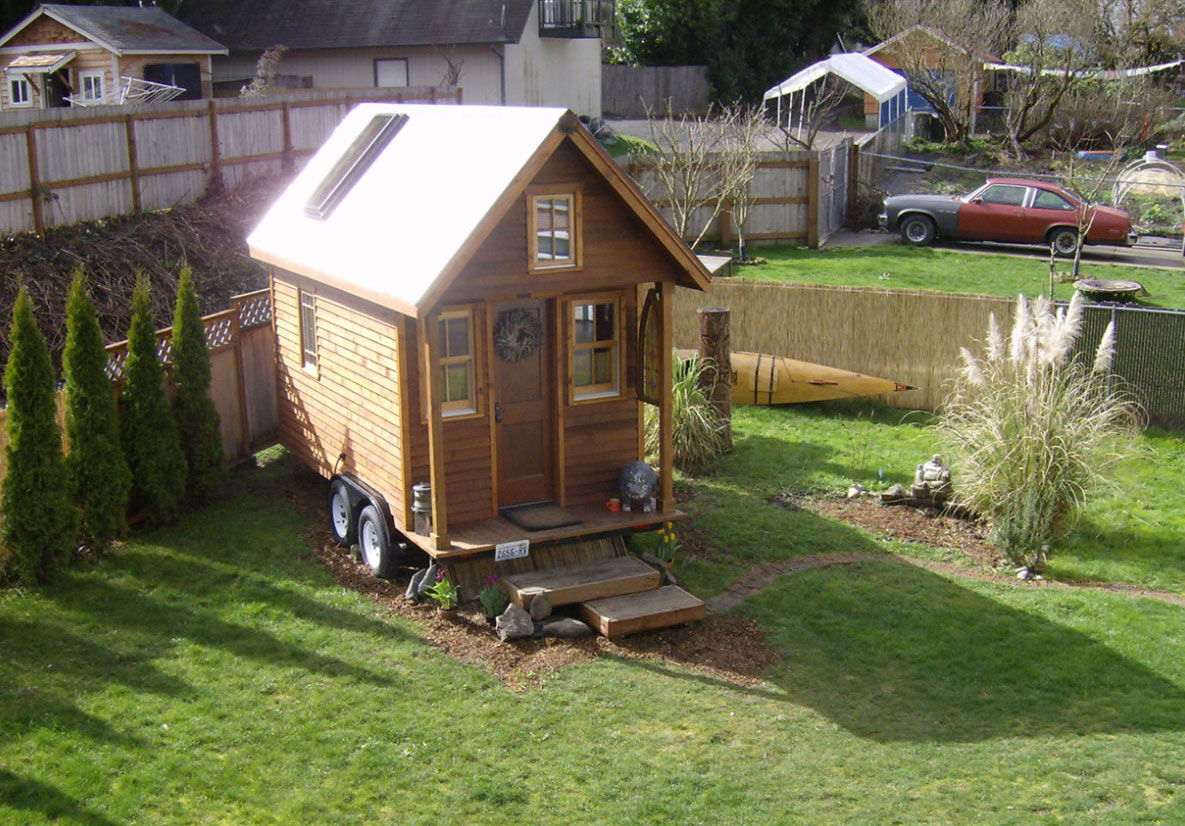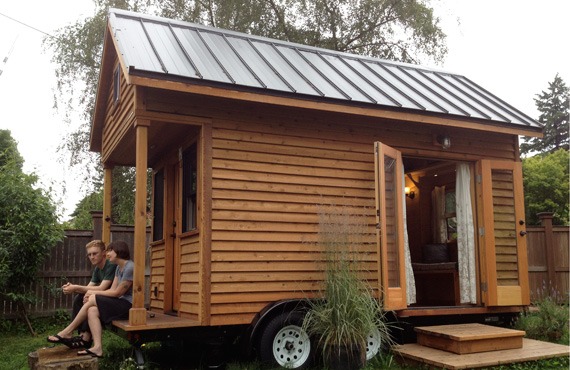
The question of how to find tiny house parking is one of the most discussed issues in the tiny house world. What will the place you call home look like, and who will be part of it? Do you want peace, quiet, and country views that stretch for miles, or to be nestled into your best friend’s back yard? And once you do decide where you want to be, will you live in fear of being asked to move because it violates the zoning laws in your area?
There is no one right answer to any of these questions. Parking is always a rich subject at our Tiny House Basics Workshop, where there are always common questions, and utterly unique options. We recommend recognizing the different obstacles and opportunities for parking, being thoughtful about what home means to you…and ideally, doing these things before you actually move in.
How to Find Tiny House Parking, Step One: What Do You Want?
First, we recommend writing down exactly what your ideal home location would be. At this stage, it’s just an exercise to figure out what you want, but you can also re-use a lot of this material when you start shopping for a host property. Try and cover practical questions, as well as the touchy-feely stuff:
-
Are you bound to one geographical area for work, family and community, or do you intend to move somewhere new?
-
Do you want to park on an isolated property, or in a space that belongs to someone else?
-
If you’re parking on someone else’s land, what level of social interaction do you want? Will you be automatically invited to one another’s barbeques, or do you want to just carry on separate lives in a shared space? Will you feel free to throw out a picnic blanket in the yard on a sunny day, or will you feel like you’re invading “their space”?
-
What types of practical “big house” support are you hoping for? Utility hookups like water and electrical are common, but also consider things like internet connections, laundry, and receiving mail. Parking on someone’s property is not unlike a landlord/tenant arrangement, so think through how to fairly share the costs a tiny house still incurs after you’ve built one.
-
Will local laws be an obstacle to parking in the area you plan to? If so, who can you speak with to try and work something out?
Some of these questions can create conflicts. It might be easier to park a tiny house in a rural area from a legal standpoint, but rural areas present other challenges, like social isolation and lengthy commutes to urban jobs. It’s not necessary to have perfect answers to all these questions, just be thoughtful about them, and then move on to…
How to Find Tiny House Parking, Step Two: What’s Actually Available?

Once armed with your hazy vision of a dream parking situation, start getting the word out about what you’re looking for to anyone who might be able to provide something like it. Tammy and Logan from the Rowdy Kittens blog have a great audio clip describing their process of looking for parking leads. Listen to it here. They shopped for a parking spot for their house (which was designed by PAD a few years back) by personally emailing friends and acquaintances in their area with a flyer they’d made on what they were seeking in a parking spot. This is where you can take those questions you answered for yourself in Step One, edit them down into the basics, and use them to start some conversations. Tammy and Logan also explored using a realtor to shop for parking options in a new location where their social network wasn’t as strong.
If someone responds to your description with interest, sit down and have a detailed conversation with the property owners about everyone’s expectations. Really talk through the whole situation, almost as though you would be both roommates and tenants. Do this even if you are already friends with the potential host. Maybe especially if you are already friends with the potential host.
-
What do you need to know about one another to know if this is a good match? Do they entertain large groups of people in the yard constantly? Do you? Is your or their free time spent reading quietly, or practicing the bagpipes?
-
How will you share utility costs? What will you pay for land rental costs?
-
How will you address conflict if it arises? And the arrangement isn’t working for you or them, how much notice will you need (or will they give) for you to find a different space and move to it?
Home Is What You Make It
We can talk parking options, dreams and realities until we’re blue in the face, because it’s going to be different for everyone. And for tiny houses, it also isn’t permanent, so you may address these questions again and again. Tammy and Logan just moved for the sixth time. When PAD collaborator Lina Menard moved last year, it actually gave her a new appreciation for how setting, landscape and lighting can make the same house feel like a totally new space.
Many people who are interested in tiny house living feel that their life occurs out in the world, not just inside their house, and where you park is the gateway to that world. Approach parking by being thoughtful about what you want, being proactive about finding it, and clearly communicating with whoever is hosting you. If you do that, you’ll be happy to step outside your door each morning, and that’s what everybody wants.

Comments are closed.